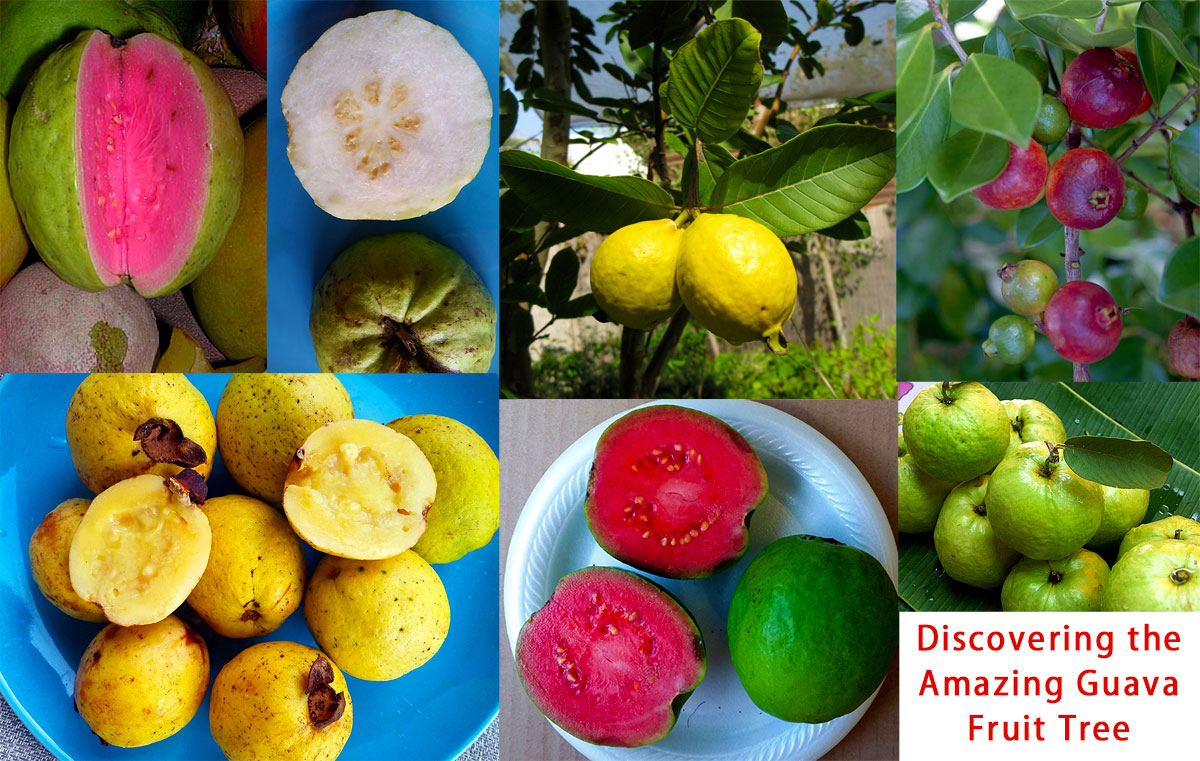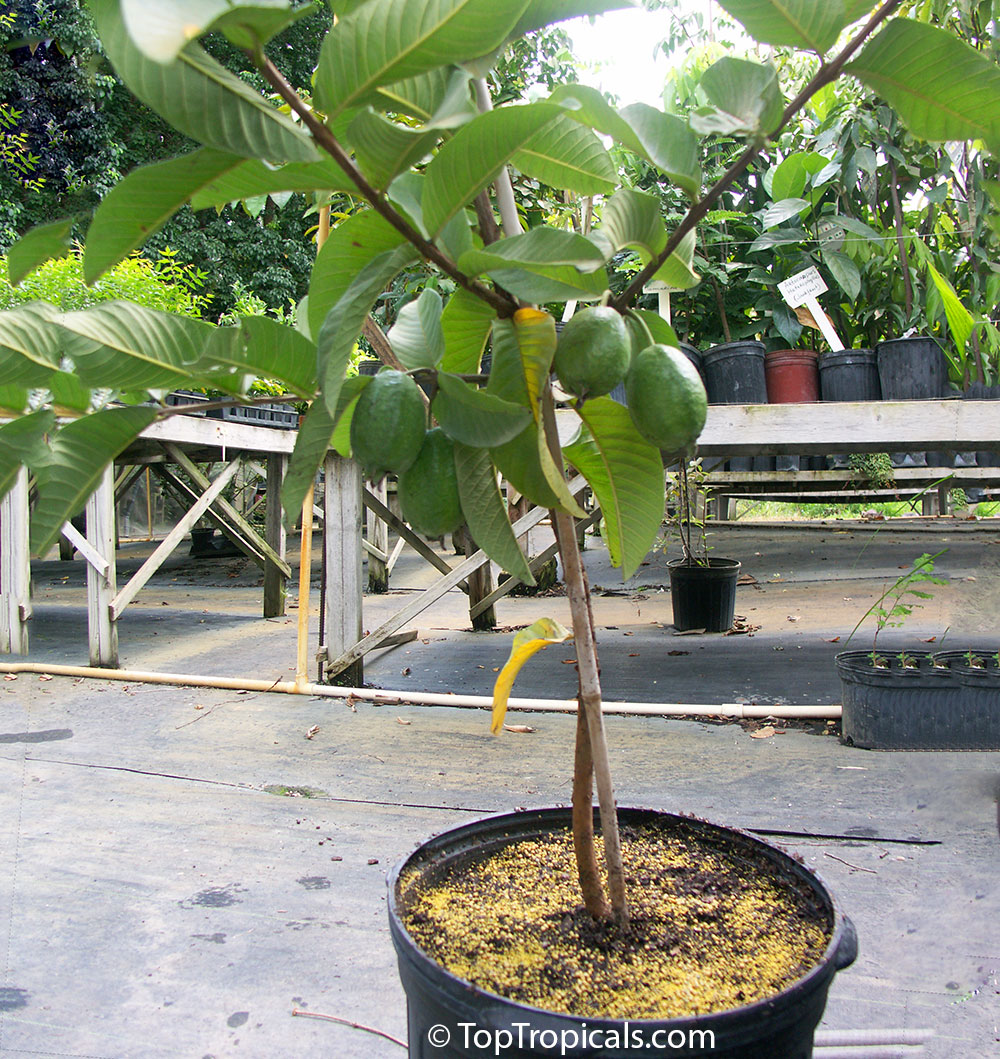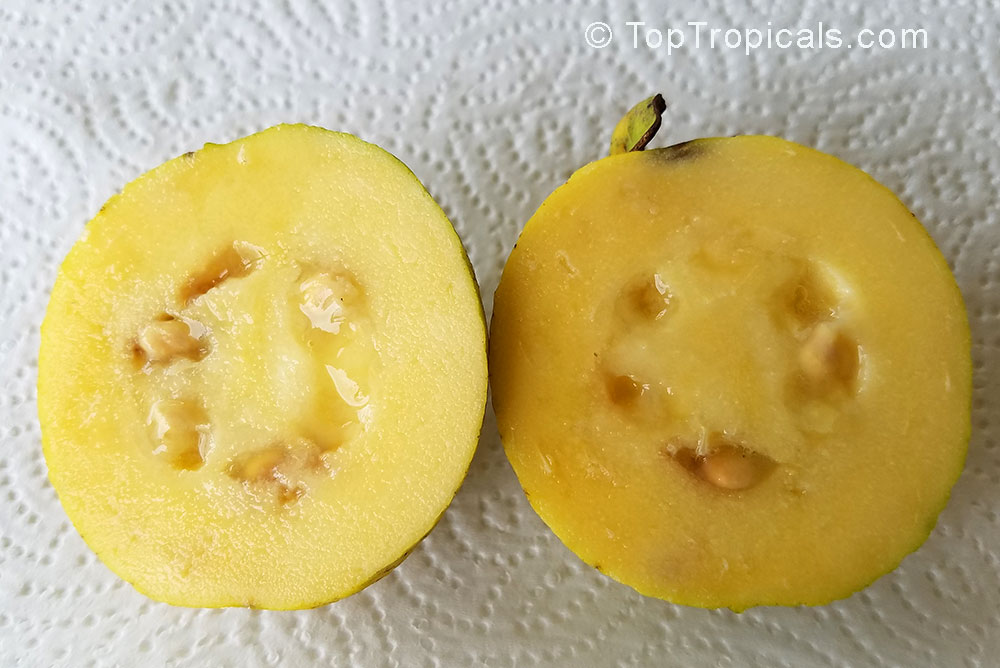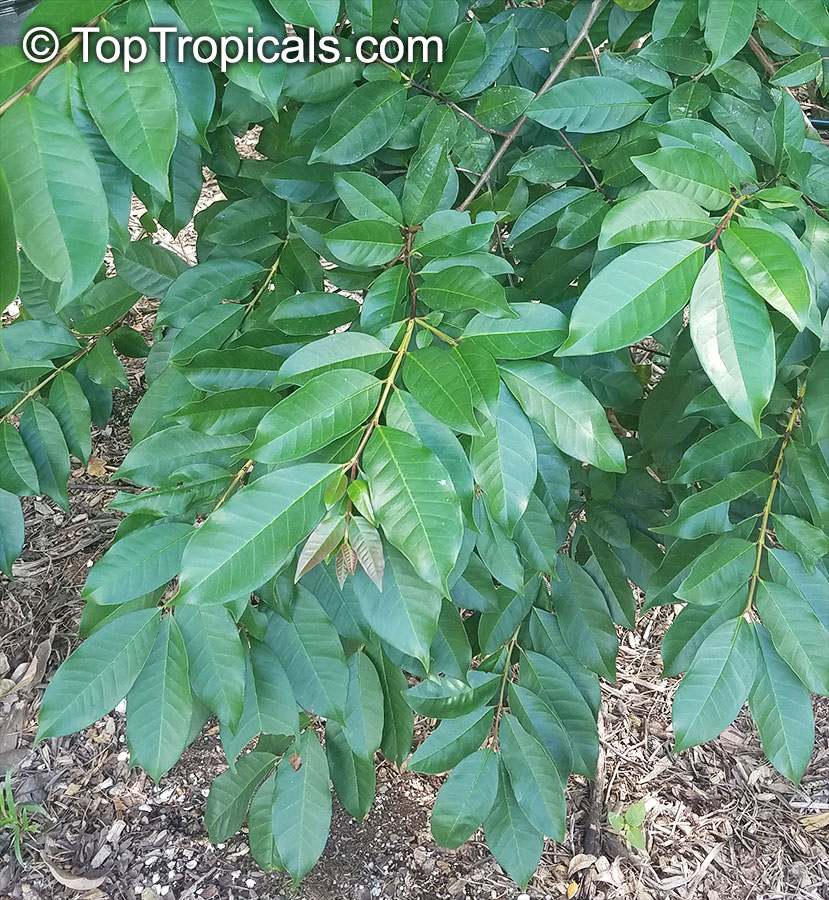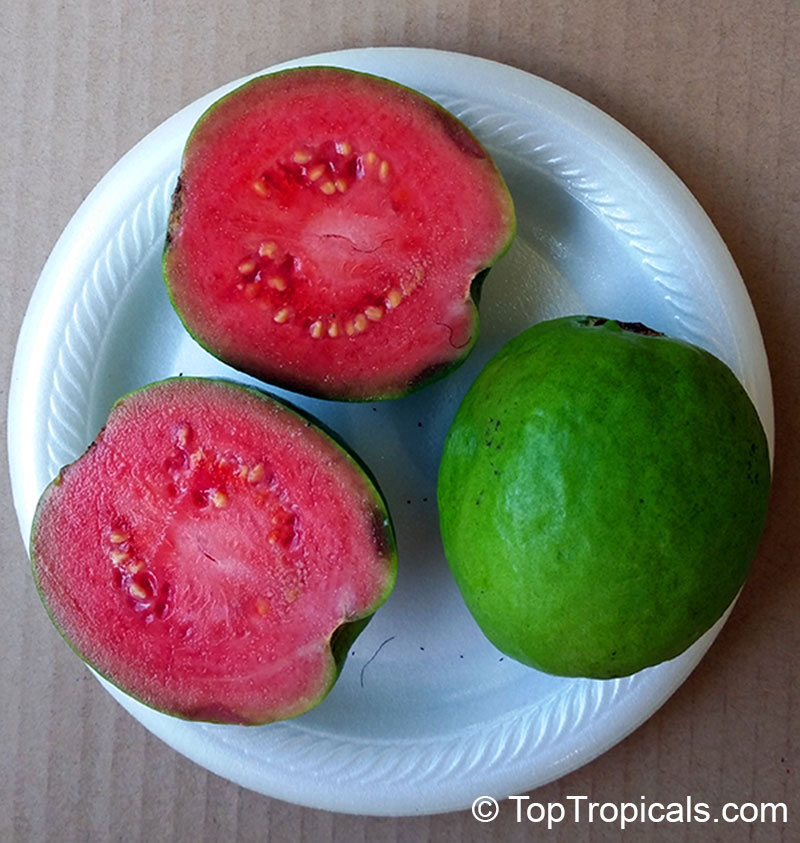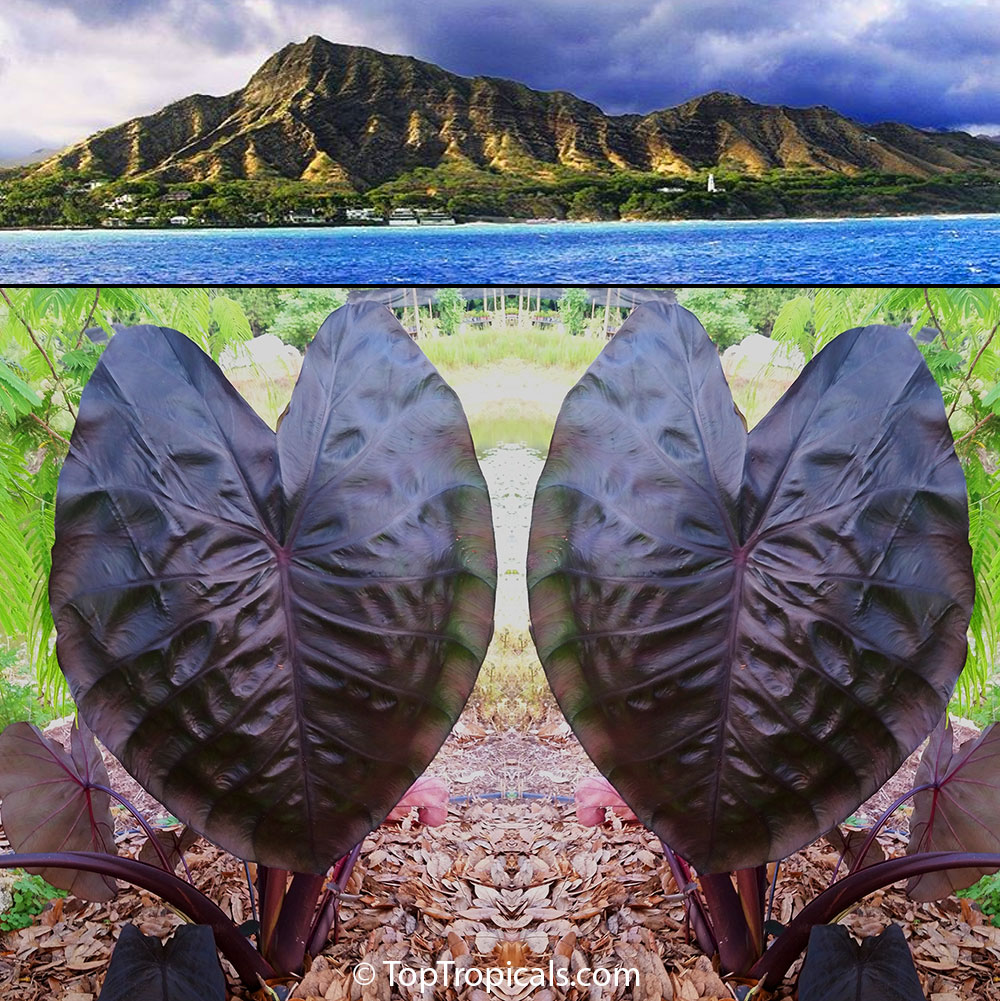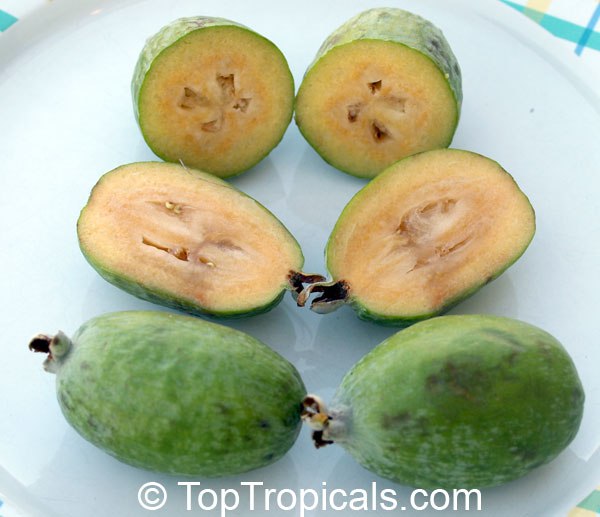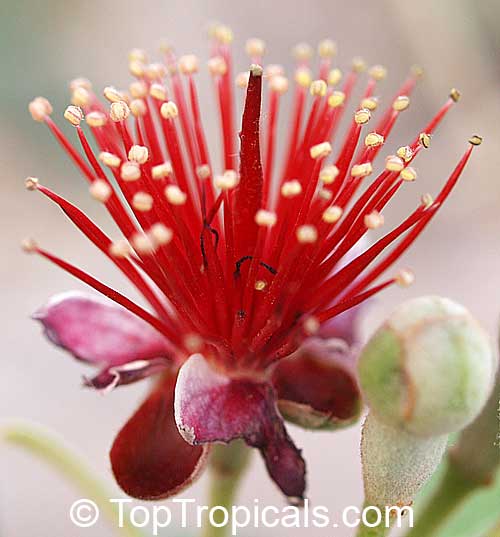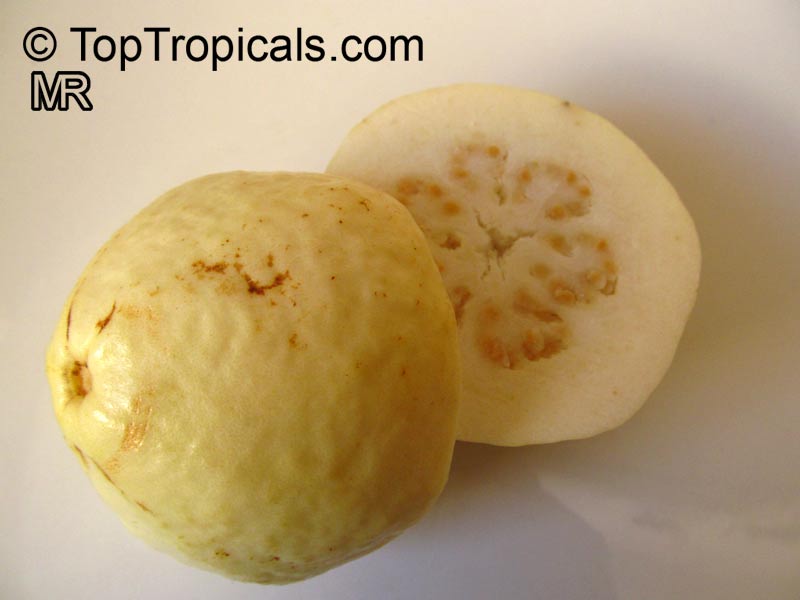Garden Blog - Top Tropicals
Date:
Discovering the Amazing Guava Fruit Tree
A Gardener's Delight:
How to grow Guava Tree, delicious recipes and more...
Imagine stepping into your garden, plucking a fresh, juicy guava off a tree, and savoring its sweet, tropical flavor. Sounds delightful, doesn't it? Guava trees are not only a wonderful addition to any garden but also offer an array of delicious and nutritious fruits. Let's explore the fascinating world of guava fruit trees, dive into the different species, and share some tasty ways to enjoy this remarkable fruit.
If you're blessed with a warm climate, find a sunny spot with well-drained soil for your tree. Water it regularly, especially during dry spells, and keep it well-fed with a balanced fertilizer. Pruning is essential for maintaining a bushy, healthy tree that'll reward you with an abundance of fruits...
Date:
Grow Your Own Food:
Costa Rican Guava - Guava for Drinking!
by Alex Butova, the Witch of Herbs and Cats
...Looking for a handsome, unusual fruit tree for container culture with healthy and flavorful fruit? Or simply want an easy fruit tree that is hardy and undemanding? Psidium friedrichsthalianum (family Myrtaceae), the Costa Rican Guava or Cas Guava, is a perfect small guava tree that can be very rewarding. In Nicaragua it is called "Guava for Drinking" or "Fresco de Guava". Despite the tartness, the flavor is excellent with passionfruit and pineapple tones and is much more pronounced than the subtle flavor of the common Guava. These fruits are very much a part of the culture and cuisine of Costa Rica. Also it has been successfully grown in California now and can be grown in many subtropical regions or as a container plant - "condo" fruit tree...
Date:
Guava, the easiest container fruit tree
Grow Your Own Food
Guava is one of the most popular and well-known tropical fruit because
it is so tasty, sweet, juicy and flavorful! Many people are familiar with it
because of the large number of products made from this aromatic fruit. But
very few people know that Guava tree culture is very easy and this plant can
fruit in a pot right away. Guava tree start blooming and producing fruit as
small as 1 gal pot size. It can be kept in compact shape, responds well to pruning, stays bushy and grows very fast. It
is a perfect container fruit tree or a specimen for a tropical garden of any
size.
Upon ripening, the fruit becomes soft and juicy. It may be eaten fresh,
made into a juice or nectar contain fruit pulp, or made into preserves, jam,
jelly, or paste. A distinctive, savory-fresh aroma of fruit is thermo-stable,
thus survives processing. The guava is an excellent source of vitamins C and
A.
The plant is relatively cold hardy. Our young trees, 3 months after being
planted in the ground were exposed to a short period of freeze last winter
(mid-20's) but they grew back without significant damage. Try to keep Guava
cold-protected for the first winter, then it will be much hardier once
established.
Guavas are fast growers and heavy feeders, and benefit from regular
applications of fertilizer. Make sure to get some Sunshine Boosters fertilizer: Sunshine
C-Cibus - Crop Booster, and feed them your round.
Date:
New Video:
Dwarf Guava Hawaiian Rainbow
Psidium guajava "Nana"
Put a little Aloha in your garden... A guava that will bring a taste of the Islands!
This is a very small version of the favorite aromatic Guava - Nana. It grows only up to 5-6 ft tall with a short trunk and a branching, bushy habit. It is perfect for those who have limited space. It can be grown in a pot and fruits heavily. Provided with warm conditions, the tree can bear fruit almost year around. The fruit is round, about 2", pretty good size for a dwarf tree. The flesh is sweet, aromatic, and
varies from white to yellow to pink.
Subscribe to our Channel:
Stay updated with TopTropicals Videos by subscribing to our channel at YouTube.com/TopTropicals and get our latest video news of what is fruiting and blooming!
Date:
Easy Sunday Morning Deals: Dwarf Guava Hawaiian Rainbow
Saving on your favorite plants is Easy.
Easy like Sunday Morning...
..."A ' ohe loa i ka hana a ke aloha.
Distance is ignored by love..."
- Toni Polancy -
It's time for our favorite day and another Easy stroll through Top Tropicals Garden with savings of
50% and MORE!
Put a little Aloha in your garden....
Two Exotics from Paradise
It may be cold where you are, so take a trip with us to the Hawaiian Islands. Tropical breezes,
soothing ocean waves and an unbeatable selection of tropical plant treasures...
This week we bring the Aloha to you. A guava that will bring a taste of the
Islands and a spectacular variety of Majestic Taro.
Dwarf Guava Hawaiian Rainbow
- Ready to fruit this year! -
This is a very small version of the favorite aromatic Guava - Hawaiian Rainbow Nana. It grows only up to 5-6 ft tall, perfect for limited space. It can be grown in a pot and fruits heavily almost year around. The flesh is sweet, aromatic, and varies from white to yellow to pink.
Colocasia Diamond Head
- Large Developed plants! -
Diamond Head is a spectacular variety of Taro is named after the volcanic cone on the Hawaiian island of Oahu - both the cone and plant are black and lustrous! Mature plants form a well-behaved clump and reach 3 to 4 feet tall, with leaves up to 2 feet wide! A must for black plant fanatics. Grows more compact that other Colocasias and no two leaves are the same!
Colocasia Diamond Head,
regularly $42.95,
is on Easy Sunday sale for only $21.48
Dwarf Guava Hawaiian Rainbow, regularly $52.95,
is on Easy Sunday Sale for only $26.48.
Combine the two for maximum Aloha and save even more:
only $42.95 for both - one plant comes FREE!
Remember, the Easy Sunday Deal expires on Monday January 17th.
Date:
Varieties of Guava
Q: We were just in Australia where guava juice was available in the markets. Pretty sure I can grow different varieties of Guava's here, as I have 3 already, but wondering if it would be psidium guajava or littorale as the best bet for making the pink juice we enjoyed. Thanks so much, your plants are so healthy when they arrive!
A: Both species are used for commercial juice making. We grow lots of Psidium littorale - Cattley Guava, Strawberry Guava - and we make delicious juice. Psidium guajava - Tropical Guava, Guajava - is less juicy, fruit is somewhat dry, but it still has a great flavor; you may need to add water to blended pulp. And sugar - add it to both kinds of fruit!
Check out our Guavas!
Why is it called Pineapple Guava? It tastes just like strawberries! Feijoa Superfood
- Feijoa is certainly one of the easiest fruit trees to grow as it does not require much care.
- Feijoa is an attractive, evergreen large shrub that produces lovely edible flowers and fruit.
- The fruit is eaten fresh, added to smoothies, fruit salads, used to make delicious jam (that tastes like Strawberry Jam on steroids!), and wicked chutneys.
Feijoa fruit go a long way in flavor!
📚 Learn more about Feijoa
🛒Grow your own Feijoa
#Edible_Forest #Guava
TopTropicals.com
We Grow Happiness
Date:
How to get shade quickly... and stay away from oaks
Q: I just moved from Tennessee into a new house in Florida and there are no trees on the property, the yard is brutal hot. What can I plant so I have some shade real quick? I like Florida shady oaks, how long will they take to grow?
A: First
of all, do not rush into oak solution. Oaks are beautiful shade trees, however
they have at least 2 problems:
a) Oaks are slow growers and unless you are willing to wait some 20
years... you won't get that desirable shade that quickly.
b) We have hurricanes in Florida... sometimes. A hurricane can damage
any tree, however with oaks it may be the worse case scenario - the branches
of those giant trees are huge, hard and heavy and in unfortunate situation
when you need to remove or trim a broken tree, it may cost you... a few thousand
dollars.
These are solutions that are more economical and practical:
1) Selection. If you have room, get one of these most popular Florida shade trees: Royal Poinciana, Golden Shower, Hong Kong Orchid Tree, Red Kapok, Bottlebrush, and many others. See full list of fast growing shade trees. Or simply get a Mango Tree and have delicious fruit too! Many varieties of Mangos are very large and fast growing.
2) Do it right. Even if you are planting a smaller tree, 1-3 gal
size, it may become a nice shade tree within 2-3 years and start providing
your driveway with desirable shade. The keys for fast growth are -
a) Good soil. Dig as big hole as possible and fill it with good
rich soil containing compost. See planting instructions PDF.
b) Water. Do not rely on sprinklers and rains. Water your tree
daily for the first week, then at least twice a week for another month. After
that, irrigation system will be enough.
c) Fertilizer. Put a few handfuls of fertilizer in a planting hole. Then fertilize once a month during warm
season. Apply micro elements for even better results and faster growth.
3) Ask experts. Contact our office for advice. We will suggest the most suitable shade tree for your yard based on features of your property: location, soil, exposure, etc.
Date:
Best tasting white guava
Q: What's your best tasting white guava?
A: Our favorite white Guava is Viet Nam variety that is also very rare and hard to find. The fruit is
very large, up to 6" in diameter, the pulp is very sweet and somewhat
crunchy.
The seeds are small which makes it more pleasurable to eat out of hand.
Another great feature of this variety, it stays compact and branches do not
get leggy, unlike most guavas. It can be easily grown in a container,
trimmed to the desired size and it will produce fruit under proper care.
Another cool variety is Indonesian, it also has a large round fruit and very few seeds to compare with others.
And last but not least, if you prefer soft fruit to crunchy, the Peruvian variety is a great choice. The fruit is pear-shaped.
Remember to provide plant food for good production, especially if grown in a container.
Fruit Festival Plant Food - Super Crop Booster
Mango-Food - Smart Release Fruit Tree Booster
SUNSHINE C-Cibus - Crop Nutrition Booster
Date:
Full Sun Garden vs Shade Garden
"Someone is sitting in the shade today because someone planted a tree a long time ago." (Warren Buffett)
Q: I live in California and I have a large area of my garden in full shade. Are there any plants that will be happy there? I am looking for something colorful. I also have a smaller area in front of the house that has full sun almost all day long, but I am afraid this can be too hot for flowering plants? Can you recommend something?
A:
Full sun gardens have a strong, bright look while shade
gardens have cooler, subdued appearance. Both types of
gardens are fun to design and maintain as long as you pick
the right plants.
Full Sun Garden is the easiest to grow. Depending
on exposure, it may require some plants that can tolerate
the hottest summer days and the dry conditions in your
area. The good news is, the majority of tropical and
subtropical plants prefer full sun, so you have a large
selection to pick from - fruit trees, flowering trees,
shrubs, vines, and small perennials. The more sun, the
more flowers and fruit you will get! However, keep in mind
that sun gardens require more water, but generous mulching
will help to minimize watering.
Shade Garden is much more restful in appearance,
but sometimes may be a little more difficult to work with.
As shade trees grow bigger and thicker, it may become too
dark; nothing will grow in total darkness. In this case
you need to prune back some branches to let more light in.
Filtered sunlight or dappled light coming through the
leaves of the trees is beneficial and considered light
shade, which would be the best light conditions for shade
loving plants to thrive. Although shady cooler spaces
attract more insects and will require more attention to
control them, they also have some advantages over sun
gardens. You can enjoy working in cooler conditions, and
your garden will require less water. Many foliage plants
look more deeply colored and healthier than in full sun;
white flowers shine instead of looking washed out!
Our favorite shade plants are fragrant brunfelsias , clerodendrums, and of course
colorful gingers and heliconias. You
may also consider ornamental foliage of Calatheas, lush Alocasias, Colocasias, and colorful Cordylines. Check out our shade loving plant list for
more colorful suggestions. These are also great for indoor
gardens!
